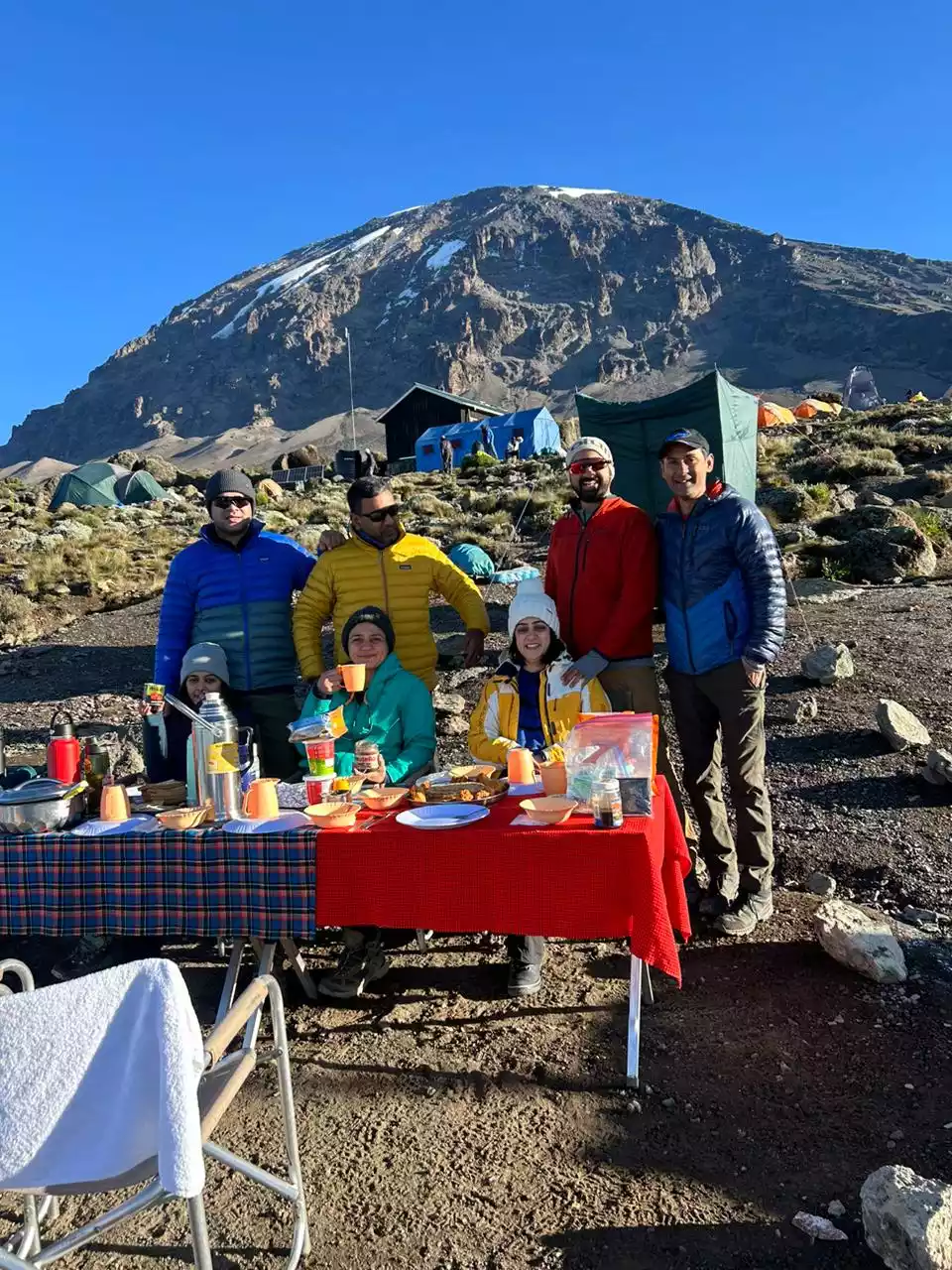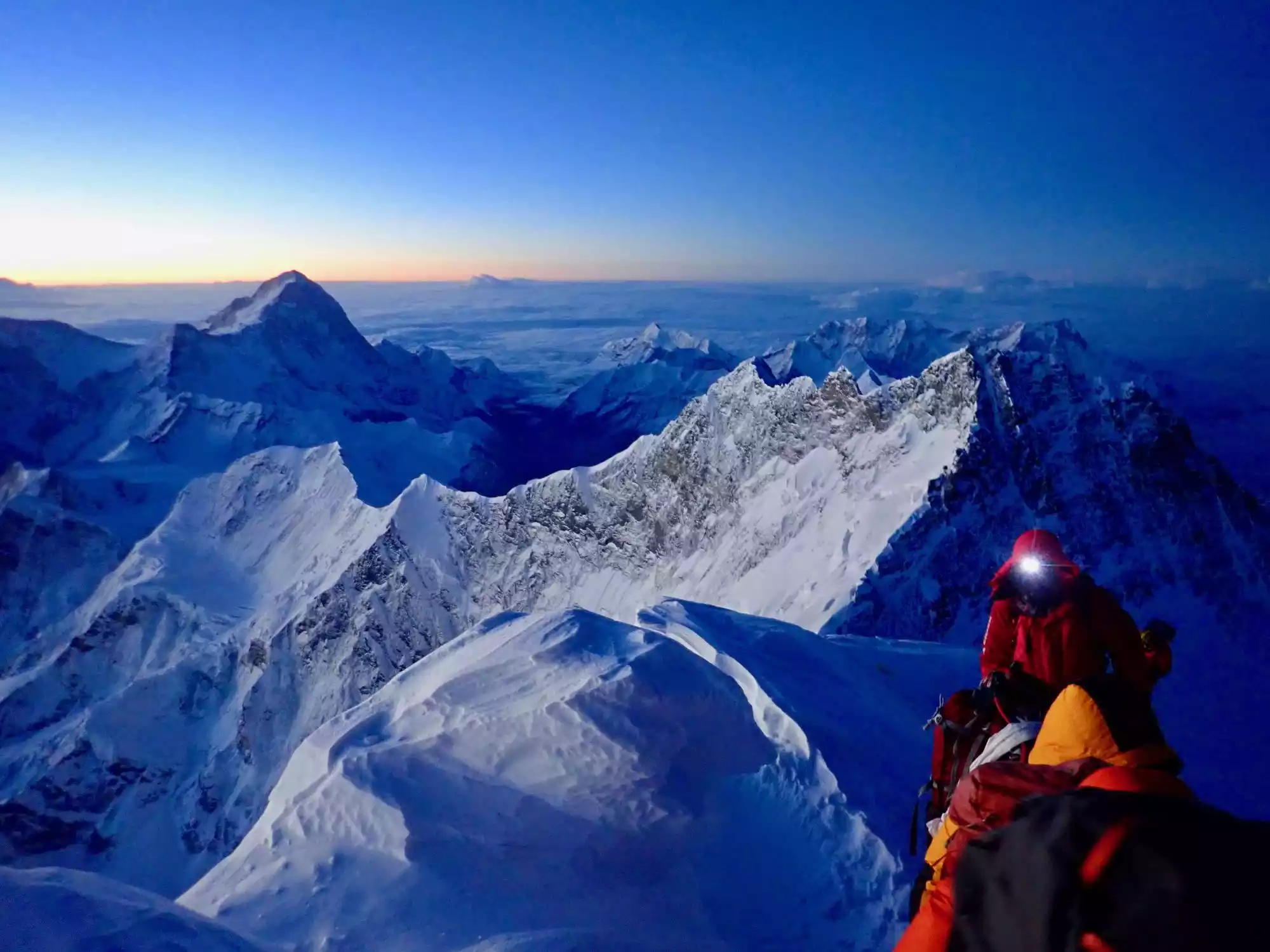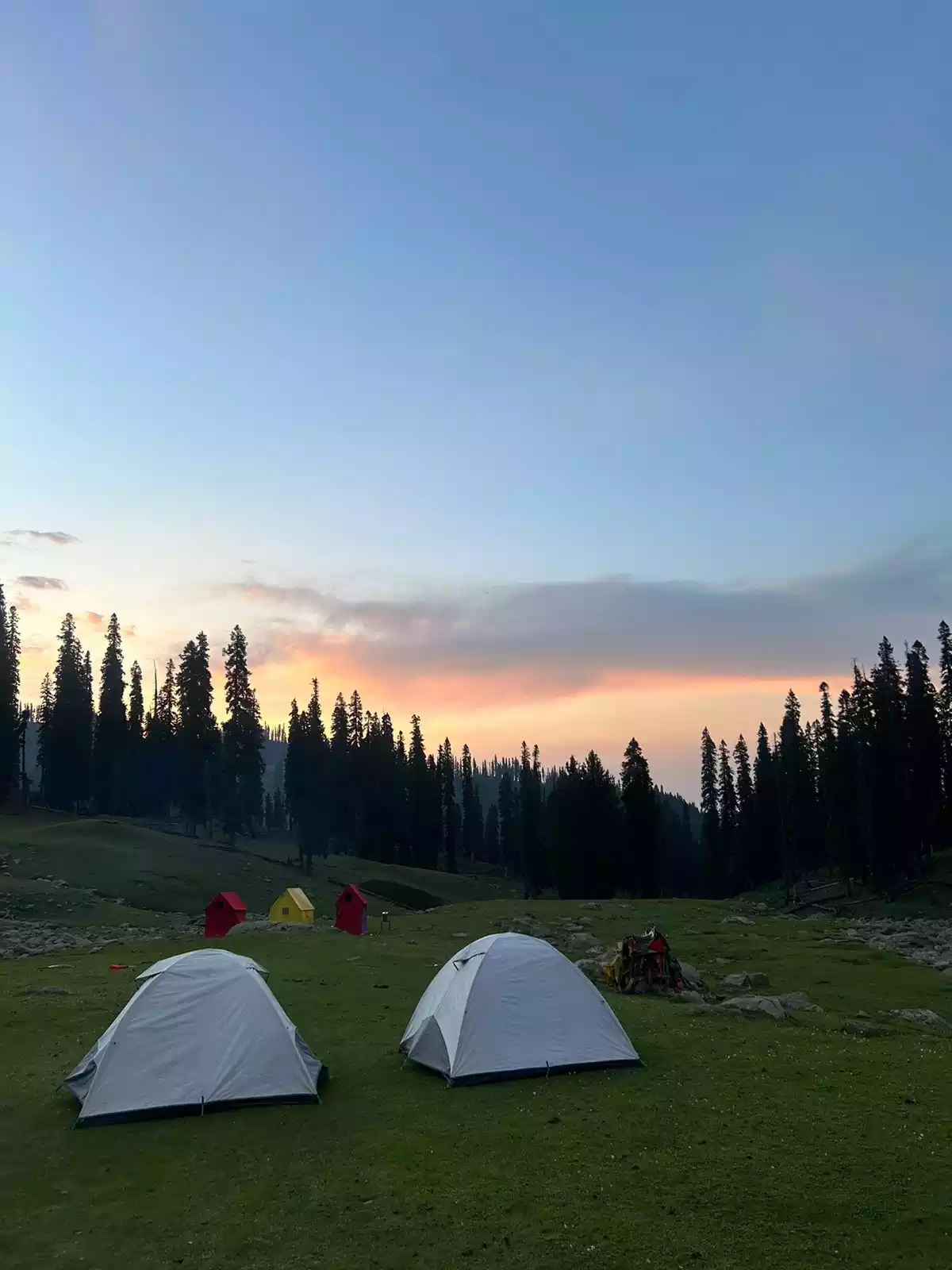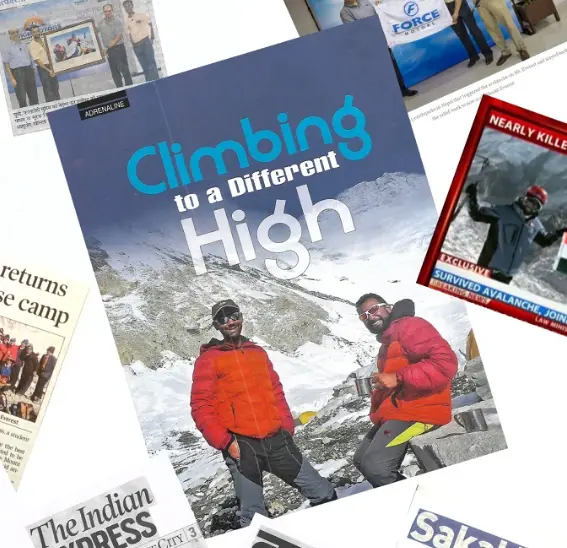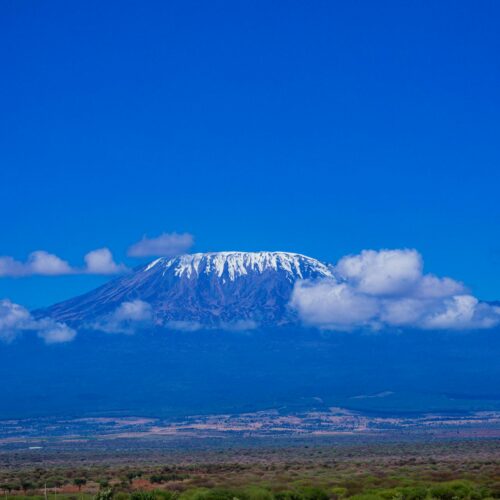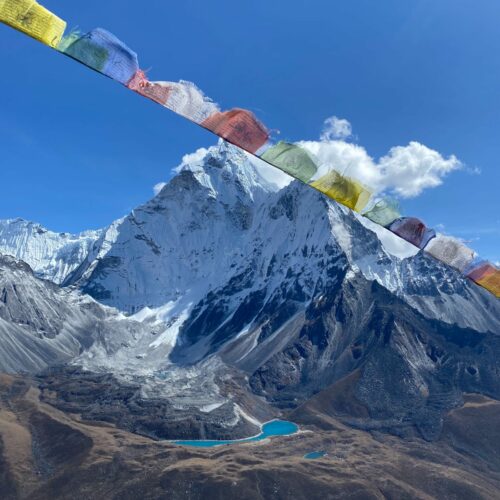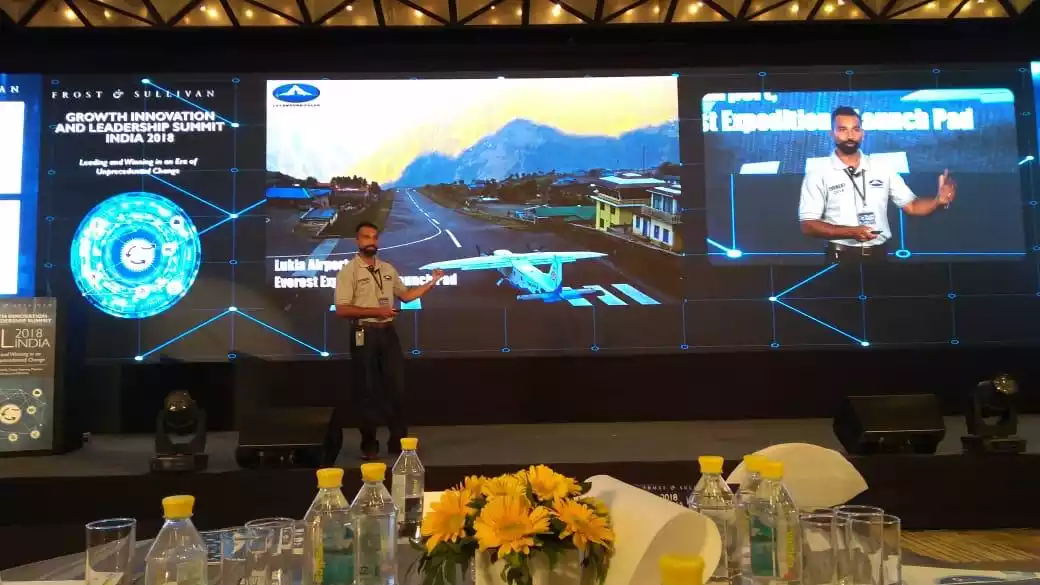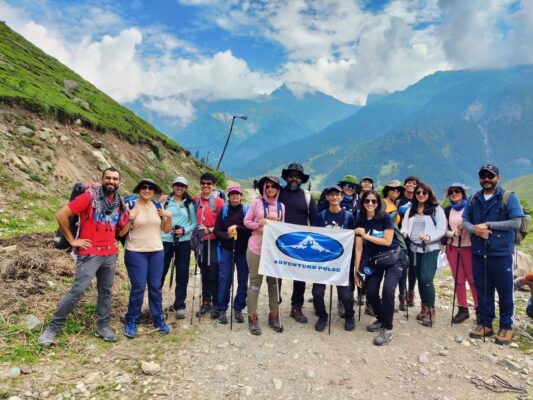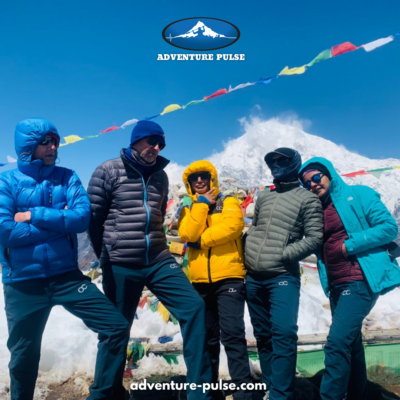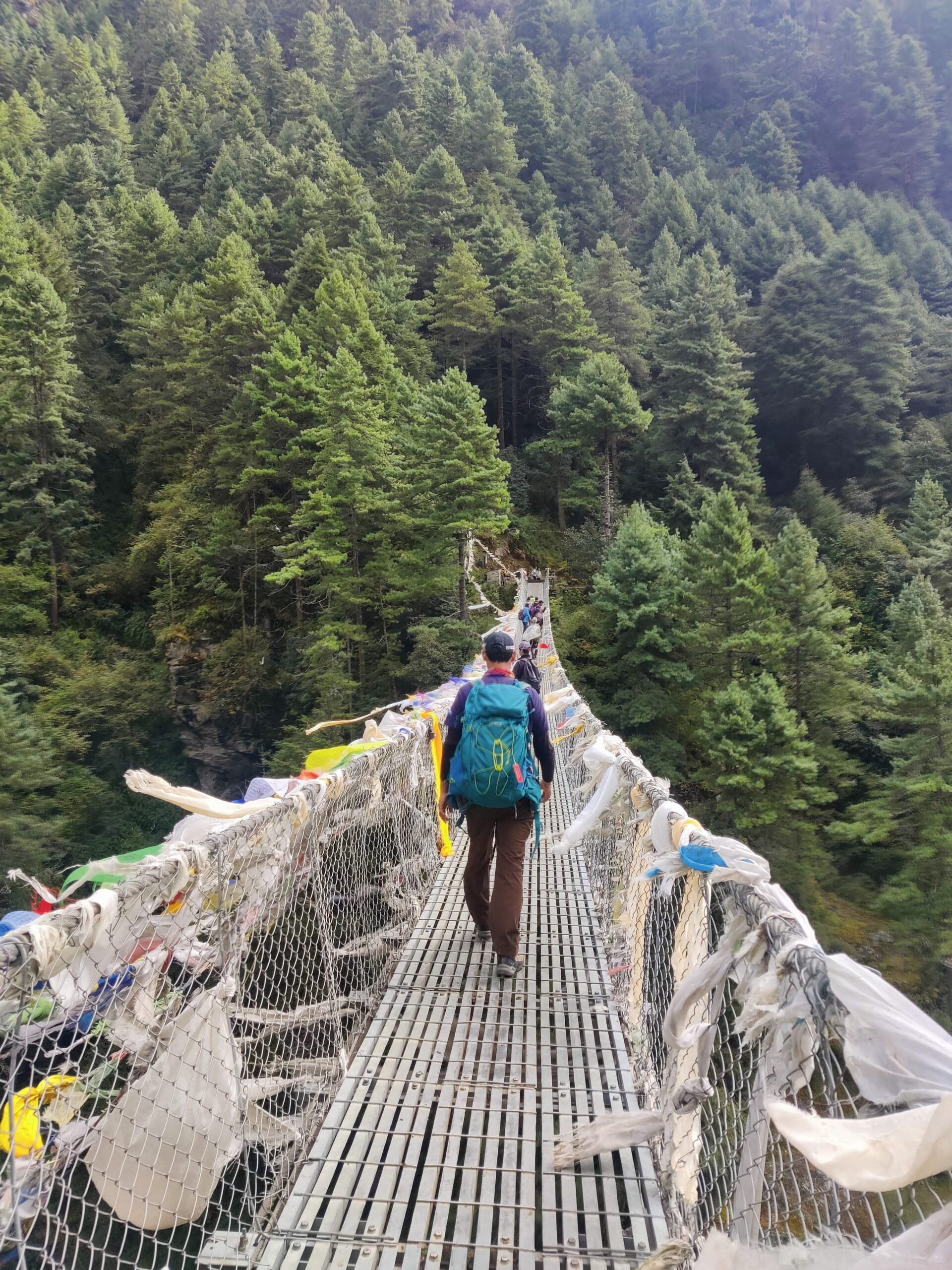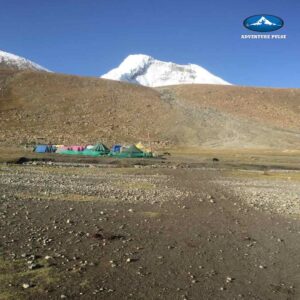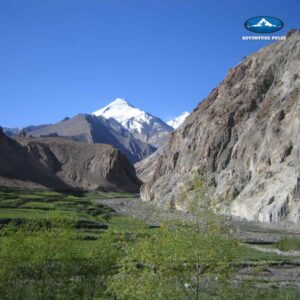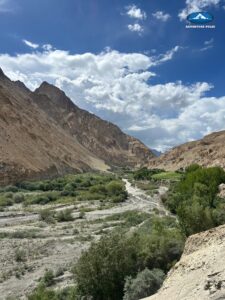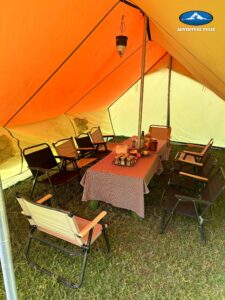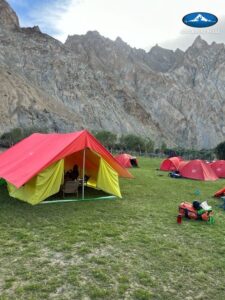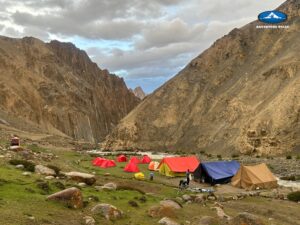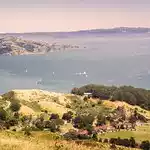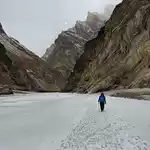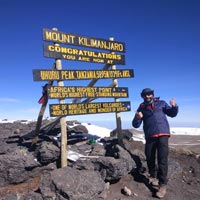Brief Itinerary
- Day 1 - Arrival in Leh. Check-in at Hotel. Rest and Acclimatization.
- Day 2 - Rest & Acclimatization Day in Leh
- Day 3 - Leh to Markha
- Day 4 - Markha to Thachungtsey
- Day 5 - Thachungtsey to Kang Yatse II Base Camp. Camp overnight
- Day 6 - Day Hike Around Kang Yatse II Base Camp Descend to Nimaling. Camp overnight
- Day 7 - Nimaling to the Roadhead of Chokdo via Kongmaru La and drive to Leh via Hemis Monastery (time permitting)
- Day 8 - Departure from Leh
Inclusions & Exclusions
Trip Cost Includes:
- Assistance upon arrival at Leh airport by our representative.
- Group airport pickup and drop on arrival and departure.
- Transportation to the start point of the trek and from end point to Leh with the group.
- Accommodation in Leh on Bed & Breakfast plan for 03 Nights.
- Tented accommodation during trek in 03 man "A" Shaped tent on twin sharing basis.
- All Meals (Bed Tea, Breakfast, Hot / Pack Lunch, Evening Tea & Dinner) during the course of the trek. (For full board service).
- Porters/Mule caravan to transport rucksack up to 10 kgs limit (For full board service)
- Currently applicable permit fees and Wildlife fees. (For full board service).
Trip Cost DOES NOT Include:
- Airfare to and from Leh.
- Additional days either on the trek or in Leh other than the standard itinerary.
- Any kind of Personal Equipment or Optional Tours/Extra Meals Ordered.
- Tips, Insurance, Laundry, Phone Calls.
- Any Kind of Drinks (Alcoholic, Mineral, Aerated).
- Guide fee, camera fee, soft or hard drinks, starters.
- Anything not specifically mentioned under the inclusions.
- Single supplement tent or hotel.
- Expenses arising out of early arrival and late departures.
- Expenses arising out of medical evacuation, injuries if any.
Things to carry
Download as PDFExtreme temperature variations, high altitude, snow glare & proximity to the sun are certain factors which necessitate the need for proper trekking gear. In order to enjoy your experience in the mountains, we have recommended that you carry the following with you.
Apparel
- Thermal Inners - At least 1 pair of Top and Leggings
- 6 t-shirts or long-sleeve shirt (cotton/dryfit based on preference)
- 2 Pairs of Trekking Pants (strictly no denims/jeans)
- 1 Fleece Jacket
- 1 Down Jacket
- 1 Waterproof Layer (Raincoat/Poncho)
- 1 pair of Hiking Boots
- 1 pair of comfortable sandals/floaters/sneakers
- 6-8 pairs of cotton socks (for day)
- 2 pairs of thick/woollen socks (for night)
- Gloves
- Sun Cap/Hat
- Woollen Cap
- Buff/Neckwarmer/Balaclava
Accessories
- Duffel Bag / Rucksack (60L+)
- Daypack / Backpack (20-30L capacity)
- 2x 1L Bottles (to carry drinking water)
- Lunchbox
- Torch + Batteries / Headlamp
- Knee/Ankle/Wrist Guards (in case you use them)
- Trekking Poles
- Sunblock/Sunscreen
- Sunglasses
- Moisturiser
- Hand Sanitiser
- Personal Medical Kit
- Personal Toiletries Kit
- Your favourite trail snacks
Fitness
Download as PDF- There are three main aspects of training to focus on – strength training, cardiovascular training, and trekking + trekking alternatives.
- Strength training involves training different muscle groups, so that they can become stronger. There are different exercises for each muscle group, and working them all out 2x-3x a week should be enough to help you get comfortable trekking.
- Legs / lower body - exercises like squats, glute bridges, step ups and leg presses with help you develop stronger muscles in the lower body.
Core - Exercises like planks, bicycle crunches and leg raises can help with core stability; Pilates is also a core-intensive type of workout that will help.
Upper body - Bodyweight exercises like push-ups, pull-ups and dips will help develop these muscles. You can also use resistance bands or light weights to develop them further.
- It’s vital to do plenty of cardio training before your trek, so that you can get the most out of your experience
- Running - This is the most recommended form of cardio activity, as it activates a lot of the same muscles as trekking. Being able to run 10km in 60 minutes will allow you to get the most out of your trek.
Cycling / Swimming - If you have knee issues, or don’t enjoy running, you can also opt for cycling and swimming. Being able to cycling 30-50km or swim for 30-40 minutes, thrice a week, should be good to help you with treks like EBC.
HIIT training / Crossfit - Another option to level up your cardio training is to opt for high intensity aerobic exercises like HIIT or Crossfit, 2-3 times a week
The aim is to get your heart rate up, so you do not get winded on long days of trekking
- Hiking
Try to get outdoors and go for a hike on the weekends! Uphill trails of 4-8 kilometres are will help you get used to trekking. Make it a point to carry a loaded backpack, and walk in your trekking shoes.
- Hiking Alternatives
Climbing stairs, and using the treadmill or stairmaster on an incline, will help prepare you for treks. Make it a point to carry a loaded backpack so that you can get used to the extra weight; and use your trekking boots, so that you can break them in and walk comfortably.
- If you’re confused with all this information, no need to worry! The most important thing with training is consistency, and staying injury-free. Your training week should ideally have
Strength training - 3 sessions
Cardio training - 3 sessions
Hiking - 1 long session, best on the weekends
Rest and stretching - at least 1 day
FAQs
Markha Valley Trek
What are the staying arrangements for this Trek?
In Leh you will be put in a 3 Star Deluxe Hotel for 3 nights on Bed & Breakfast Plan.
During the course of the trek you will be be put up in 3 Man A shaped Tents on Double sharing Basis which will have a mattress and a Sleeping Bag inside.
What kind of Physical shape do I need to be to undertake this trek?
The trek to Markha Valley is not a difficult trek but can be steep & strenuous at some places, even though it does not require that you have any previous mountaineering experience in Particular, It’s important that you be in good physical condition and be able to hike at a comfortable pace for 5-6 hours over hilly terrain with a light day pack. Good cardio-vascular conditioning and muscles that are used to hiking will make your trip much more enjoyable. Our goal is to trek at max. Altitude of 5260 m and walk through beautiful trails and rock formations leading to the raw beauty that Ladakh has to offer. You will spend 7 days in a land where life is simple, trails are steep and the air is thin. Please find the Fitness Preparation Guide that we recommend to prepare yourself better for the trek.
What are the entry and exit points for this trek?
One needs to fly to Leh for the Markha Valley Trek. There are regular flights from Delhi and Mumbai to Leh. On your arrival in Leh, you will be picked up by an Adventure-Pulse representative and transferred to the hotel. After our 02-day acclimatization at Leh, we would drive to the start point of the trek which is a 03-hour drive from Leh.
We finish the trek at this place called Chokdo where we reach the Roadhead and then drive back to Leh via the Hemis Monastery.
What about high-altitude acclimatization?
Leh is located at an altitude of 3250m and it’s important we spent the first 48 hours acclimatizing in Leh. We at Adventure-Pulse, consider acclimatization as one of the most important aspects of climbing a mountain and spend enough time to do that. Once you arrive in Leh, the first 2 days are spent acclimatizing. On day 02 morning, we go for a short 02-hour acclimatization hike up to a monastery and/or Shanti Stupa. In the evening, we walk to the Leh market and walk back to our hotel, thus allowing the body to get used to the conditions around.
What are the food arrangements?
The hotel in Leh serves good breakfast which is included in the meal plan. During the day and evening, one can order ala carte service in the hotel or even go to the close by market to try some local cuisine. While on the trek, all meals are included, and the meals are usually a good mix of Indian and continental food. Our cooks are very experienced and will be happy to entertain any particular requests you may have for your meals. All the meals are served in the common dining tent.
Will I be able to take a shower or bath during the course of the trek?
Regular shower facilities will be available in the hotel in Leh. But while we are higher up on the mountain, a shower facility is not available for the climbing period.
What are the medical / emergency precautions taken?
- Adventure Pulse requires each of its clients to provide a medical fitness document before joining the group. This serves a dual purpose of allowing us to be prepared for any medical eventuality as well as gives you a reality check of where you stand physically.
- Our team is well qualified for any First-Aid procedures if required on the way, having been trained in first aid and certified as Life Savers & Life Guards.
- In addition a comprehensive medical & first aid kit is carried at all times.
- In case of dire necessity, Adventure-Pulse makes provisions to ensure emergency evacuation to the nearest hospital, where the patient would be transported on a pony with the team straight to the nearest hospital for medical treatment. Rest assured, this is option has never been exercised till date and we are proud to say that we have a 100% safety record.
- Adventure Pulse team also carries an oxygen cylinder for emergency purposes.
- In case of dire necessity, Adventure-Pulse makes provisions to ensure emergency evacuation to the nearest hospital, where the patient would be transported on a pony with the team straight to the nearest hospital for medical treatment. Rest assured, this is option has never been exercised till date and we are proud to say that we have a 100% safety record.
Why is acclimatization necessary for the Markha Valley Trek?
Acclimatization is crucial for the Markha Valley Trek due to the high-altitude terrain of Ladakh, where elevations often exceed 3,500 meters, making it essential for all high-altitude treks in Leh and treks in Ladakh. As you ascend to higher altitudes, such as Kongmaru La Pass (5,260 meters), the oxygen levels in the air decrease significantly, which can lead to Acute Mountain Sickness (AMS) if your body hasn’t had time to adjust. Symptoms of AMS can include headaches, nausea, dizziness, and fatigue, which can severely impact your ability to continue trekking.
To minimize the risk of AMS and ensure a safe and enjoyable trek, it is important to follow a proper acclimatization schedule. Most trekkers spend a few days in Leh (3,500 meters) before starting the trek, allowing the body to adapt gradually to the altitude. During the trek itself, the ascent is paced to allow for natural acclimatization as you move from lower camps to higher altitudes. Taking it slow, staying hydrated, and allowing your body time to adjust can significantly reduce the risks associated with high-altitude trekking. Acclimatization ensures that you can fully enjoy the stunning landscapes and challenging terrain of the Markha Valley Trek without facing altitude-related health issues.
Featured Blog Posts
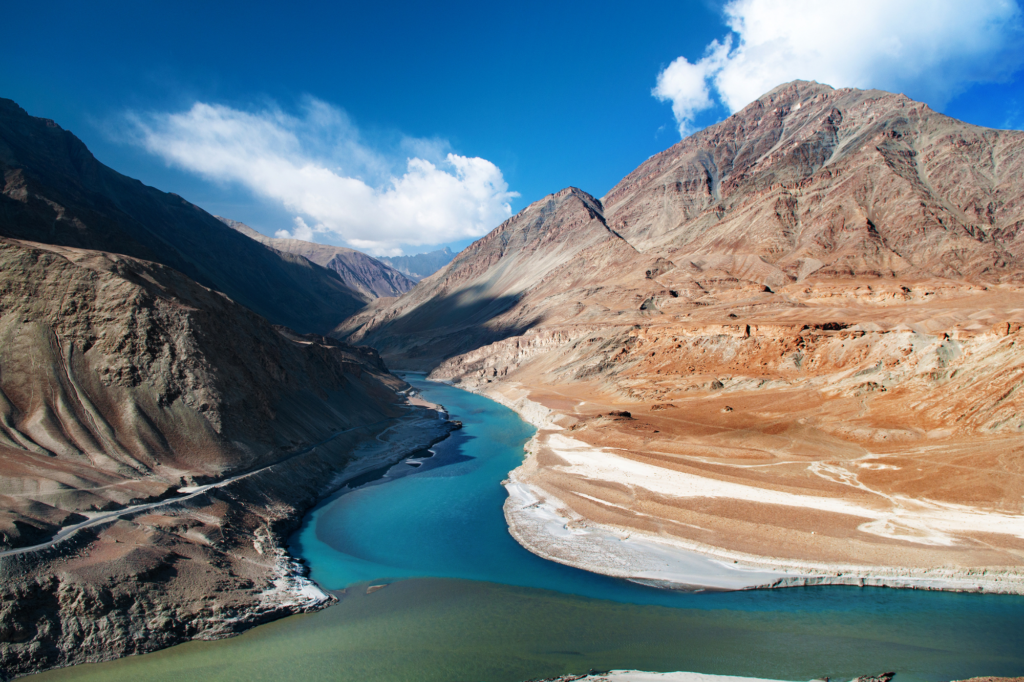 Markha Valley Trek – Journey to come .. Part 2 - Day 3 – Leaving Leh and Heading to Markha Valley Trek Finally, on Day 3 of our Markhe Valley Trek…
Markha Valley Trek – Journey to come .. Part 2 - Day 3 – Leaving Leh and Heading to Markha Valley Trek Finally, on Day 3 of our Markhe Valley Trek… 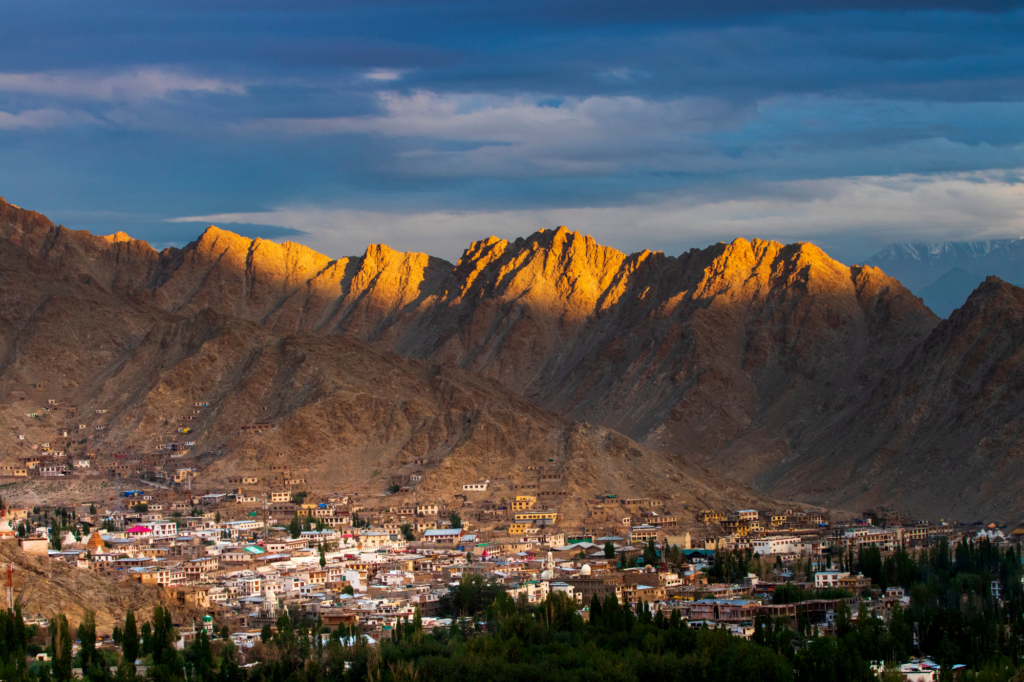 Markha Valley Trek – Journey to come.. Part 1 - Markha Valley Trek The Markha valley trek is one of the most popular treks in Leh. this moderate trek, is…
Markha Valley Trek – Journey to come.. Part 1 - Markha Valley Trek The Markha valley trek is one of the most popular treks in Leh. this moderate trek, is… 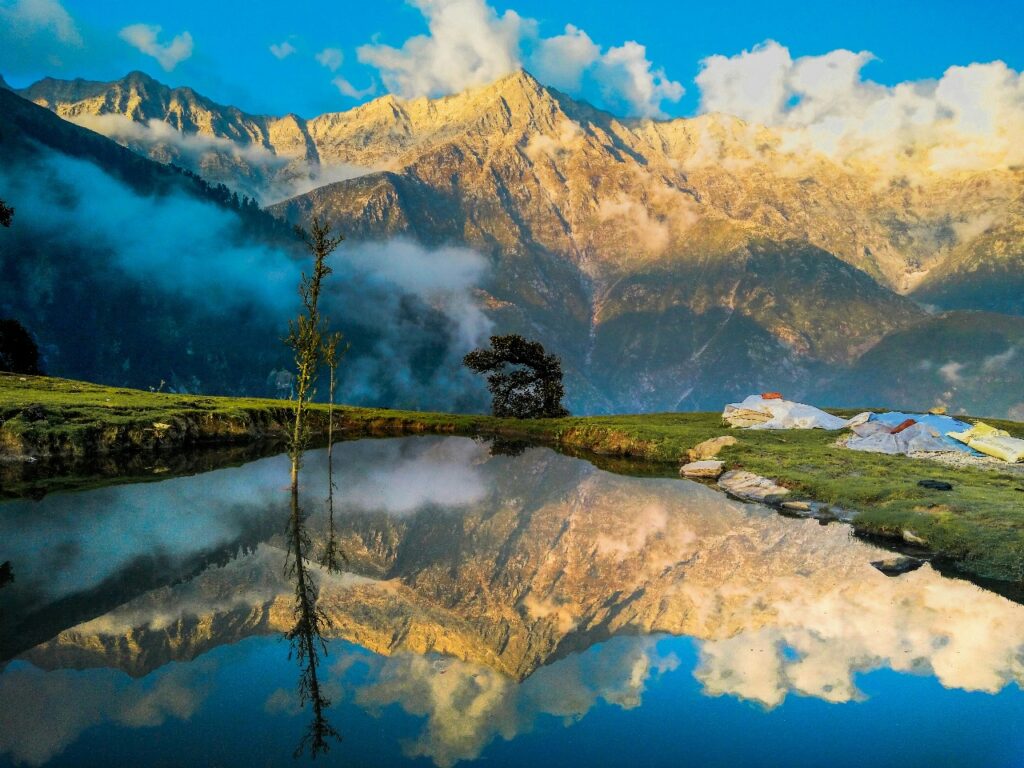 Trekking in Himachal Pradesh – An Ultimate Guide – 2026 - Trekking in Himachal Pradesh - Overview: The Call of the Mountains Situated in the lap of the majestic Himalayas, Himachal…
Trekking in Himachal Pradesh – An Ultimate Guide – 2026 - Trekking in Himachal Pradesh - Overview: The Call of the Mountains Situated in the lap of the majestic Himalayas, Himachal…  7 Reasons Why Markha Valley Trek should be your Next Trek - Nestled in the heart of the majestic Himalayas in the Northwestern region of India lies the Markha Valley Trek, a…
7 Reasons Why Markha Valley Trek should be your Next Trek - Nestled in the heart of the majestic Himalayas in the Northwestern region of India lies the Markha Valley Trek, a…

